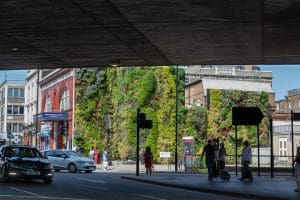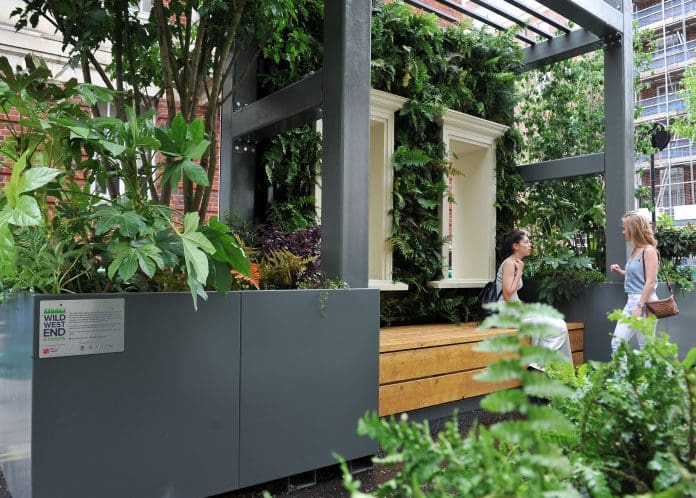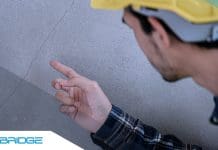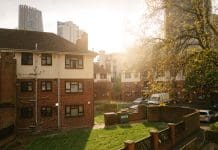With cities around the world facing potential heatwaves every summer, Dima Zogheib, nature positive design lead, and Dimple Rana, environmental and buildings physics specialist at Arup, discuss how digital tools can help manage the impact of extreme heat
Summer 2023 saw the impact of extreme heat dominate headlines globally, with cities worldwide unequipped to cope with the repercussions of climate change.
Heatwaves are still emerging even as we enter autumn, reflecting the poignant suggestion that, although we have just recorded the hottest summer in global history, we may never experience a cooler one again.
With the number of cities facing temperatures of 35C and above expected to triple by 2050, the human consequences caused by extreme heat will only prove more detrimental to local populations worldwide.
We are increasingly familiar with heat’s exacerbated impact in built environments, commonly called the urban heat island (UHI) effect, where our urban centres experience much higher temperatures than rural surroundings.
Harnessing digital tools allows us to navigate global issues
Urban heat islands largely affect how cities have been designed for years: glass buildings and concreted streets, with nature limited to grand parks and commons away from where most people live.
We now have the tools and technologies to understand heat in a way we never have. As actors in the built environment, we each are responsible for embed heat mitigation and resilience into our urban projects.
By harnessing the digital tools we now have access to, including artificial intelligence, we can navigate some of the complex global issues our cities and towns face.
This way, we can learn from each other as we progress climate agendas around the world, giving a clear understanding of how interventions can be implemented at scale and pace.
Harnessing digital tools allows us to navigate global issues
Urban heat islands largely affect how cities have been designed for years: glass buildings and concreted streets, with nature limited to grand parks and commons away from where most people live.
We now have the tools and technologies to understand heat in a way we never have. As actors in the built environment, we each are responsible for embedding heat mitigation and resilience into our urban projects.
By harnessing the digital solutions that we now have access to, including artificial intelligence, we can navigate some of the complex global issues our cities and towns face. This way, we can learn from each other as we progress climate agendas around the world, giving a clear understanding of how interventions can be implemented at scale and pace.
What is UHeat?
An example of this type of advanced technology is Arup’s newly launched UHeat, the tool at the centre of our global Urban Heat Snapshot survey, studying and comparing the “hotspots” of six major cities: London, New York, Mumbai, Cairo, Madrid and Los Angeles.
UHeat was developed to further understand heat profiles in urban areas through rapid, complex modelling and remote sensing data. It was designed to show built environment actors, including city leaders, planners and developers, how digital solutions can help deliver quantifiable insights to shape equitable solutions from the outset of their respective projects.
As part of the Snapshot, we found that within the London study area, almost 250,000 elderly people and children – citizens understood to be acutely vulnerable to heat – live with severe urban heat island spikes of 4C compared to rural surroundings.
When examining the cities’ “hotspots”, it was found that the majority have far more vegetation than the coolest areas – indicative of heat’s disproportionate effect in densely built-up areas.
Such digitalisation allows a solutions focus to drive planning, bringing socio-economic considerations to the forefront of design. For example, UHeat identified London’s coolest spot as Regent’s Park – an affluent area with 89% vegetation cover.
Nearby neighbourhoods, with 51% less vegetation cover, experience temperatures 7C higher. Used in conjunction with the broad suite of tools now available, the strategic deployment of nature can, therefore, be modelled and actioned for targeted mitigation and resilience.

Advanced technologies, such as artificial intelligence, give us insight where data is scarce to inform interventions that can benefit all – but this doesn’t make the ideas that have been around for centuries redundant, as shown below. Combining new digital tools with the practices that have been tried and tested can amplify and accelerate urban resilience – with heat mitigation a central component.
Designing for mitigation and resilience – now
Invest in nature: Nature-based solutions are scalable and affordable interventions for climate resilience – they lower temperatures, improve air quality and enhance biodiversity. Investing in tree planting is one of the simplest methods to reduce future urban heat temperatures and effects. In large city centres, projects such as London’s Wild West End highlight the possibilities for urban greening; the equivalent of more than ten tennis courts of green space was added to roofs across London’s urban centre.
When space is at a premium in cities, multifunctionality is crucial – green space must be strategic in the value it creates. The Wild West End project measures proposed installations against a baseline matrix of five themes, including biodiversity climate and microclimate.
Increase permeable surface areas: Permeable surfaces – such as planted or bare soil – tend to absorb, and so release, less heat compared with impermeable surfaces commonly used throughout our urban environments, like concrete and asphalt.
Examples of this in action, such as Sustainable Urban Drainage schemes, exhibit the co-benefits of permeable surfaces. Such schemes allow water to infiltrate the ground, ultimately utilising the permeability for cooling and enabling the slowdown of water run-off during heavy rainfalls.
Use every possible space: More than half of the space in cities (including roofs and streets) is open, providing a large canvas for building resilience. Measures can include greening building facades, greening roofs or using white paint to change the reflectiveness of surfaces to reduce the amount of heat absorbed from the sun.
Alongside the mayor’s Climate Resilience Review, Arup produced the Roofs Designed to Cool report. The publication outlines the benefits of mass roof retrofit using reflective and solar to cool the buildings and nearby external temperatures.
This reduces the need for air conditioning and captures energy to help decarbonise energy use. Establish cool islands: With cities set for heatwave conditions every summer, we need to create and increase the networks of accessible cooling spaces in cities. Related initiatives include bringing back drinking water fountains to cities, improving citizen health and becoming a main access point to water during a drought.
Cities can also now use digital technology to locate and map their coolest spaces for people to take refuge. An example of this in action is London’s Cool Spaces project, a searchable map identifying indoor and outdoor locations across the city that offer citizens an opportunity to shelter during hot periods.
Encourage behaviour change: People must also change how they live in cities within the next decade.
Hot countries worldwide have been adjusting their lives to this for centuries, and it’s time to learn from them – incorporate siestas, reconsider office hours, introduce shop and restaurant closures over peak heat, and encourage the growth of an evening economy.
Dima Zogheib
Nature positive design lead
Dimple Rana
Environmental and buildings physics specialist
Arup














